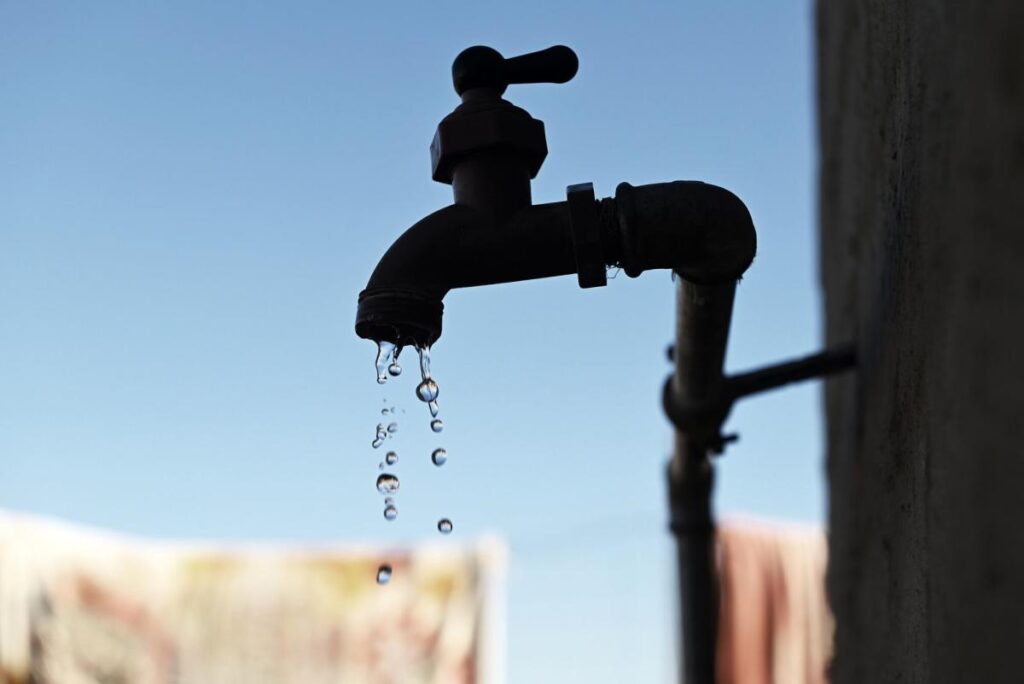Reservoir levels in Gauteng, South Africa’s most densely populated province, are experiencing a troubling decline, prompting Rand Water, the continent’s largest bulk-water supplier, to issue a stark warning that the region’s taps may soon run dry. Servicing approximately 12 million residents in major cities such as Johannesburg, Pretoria, and Ekurhuleni, Rand Water reported on October 12 that its water-storage facilities are on the brink of depletion unless municipalities promptly address significant issues such as leaks and excessive consumption. The urgent call for action comes as the summer heat intensifies, with temperatures soaring to unprecedented heights of 37°C, exacerbating the already precarious situation.
The deterioration of South Africa’s water supply system, akin to its ailing power and transport sectors, is largely attributed to a combination of inadequate maintenance, poor planning for population growth, mismanagement, and corruption. Gauteng municipalities are pressing beyond their authorized water allocations, leading to chronic shortages. Notably, Johannesburg Water Management Ltd. has reported an alarming 44% loss of its supplied water due to leaks and theft, underlining serious systemic inefficiencies. Meanwhile, the City of Tshwane, which encompasses the capital, Pretoria, warned on October 13 of the imminent imposition of severe water usage restrictions unless consumption drops significantly amid rising demand.
The alarming statistics don’t stop there: Rand Water is currently supplying Tshwane with 800 million liters (approximately 211 million gallons) daily, which is 18% more than its official allocation. Despite ongoing pleas from water authorities, consumption continues to rise, placing tremendous strain on the city’s bulk-water system and raising the risk of operational collapse. Residents, particularly in high-altitude areas of Johannesburg, face increasing chances of water outages as local demand outstrips supply. The situation is dire, with Rand Water citing restrictions on extractions from the Vaal River system due to limits imposed by the Department of Water and Sanitation.
Amid these challenges, a delayed $2 billion project aimed at enhancing water supplies from Lesotho has further complicated Gauteng’s water crisis. Originally slated for completion within a decade, government setbacks have pushed the project’s timeline back to 2029, exacerbating existing shortages. This lapse in infrastructure development highlights the government’s struggles to address the burgeoning demand for water in a region facing significant socioeconomic challenges.
Compounding the crisis, a late summer drought attributed to the El Niño weather phenomenon has further diminished water reserves, aligning with Rand Water’s warnings about the dire state of the water supply. As these pressures mount, the utility emphasized that immediate action is essential to avert what it characterized as an impending disaster. It is clear that without significant shifts in municipal management, water conservation strategies, and comprehensive infrastructural development, Gauteng’s water crisis could escalate into a full-blown emergency.
In summary, the convergence of rising temperatures, increasing urban demands, infrastructural failures, and government delays has thrust Gauteng into a precarious water shortage scenario. The current trajectory not only threatens the daily lives of millions but also poses broader implications for public health, economic stability, and social well-being. Action must be taken swiftly to address leaks, reduce consumption, and enhance infrastructure to avoid a looming disaster that could leave Gauteng’s residents without reliable access to water.

